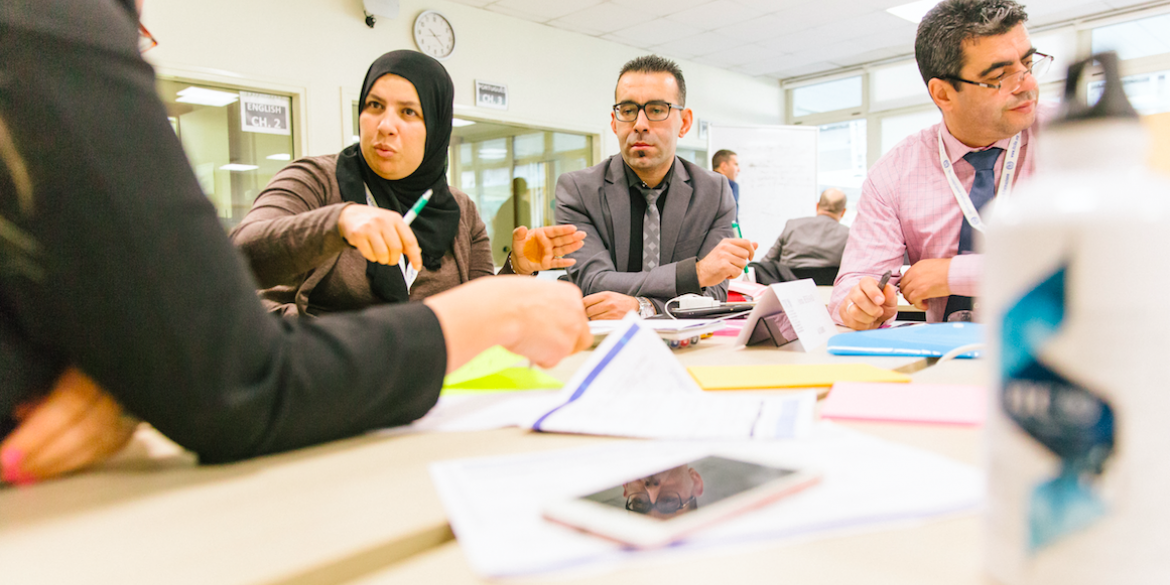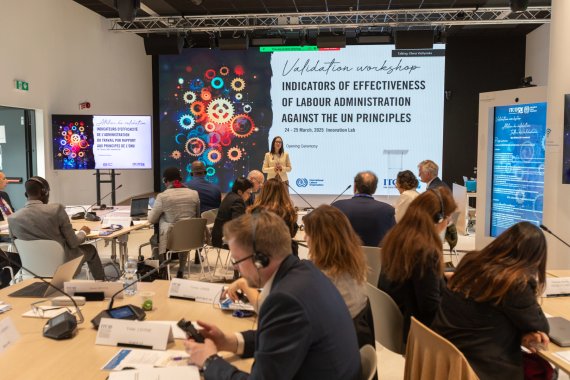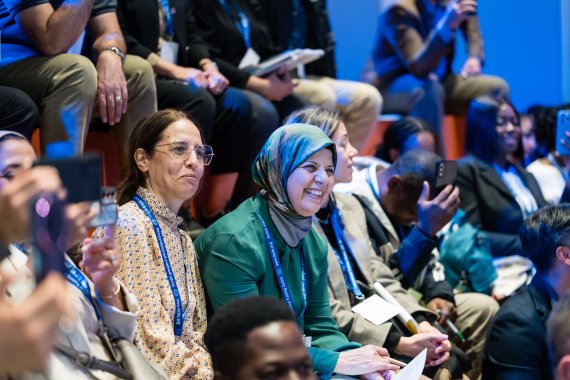MOOCs
MOOCs
The magic mass formula: How MOOCs grew success and were developed at the ITCILO
14 juin 2018

Since the start of the modern massive open online course (MOOC) movement in 2011 and the explosion of possibilities and platforms offering them ever since, MOOCs are now going through a maturing process. Despite the hype, there is no question that MOOCs are here to stay. Rather than asking whether they are going to disrupt traditional education, we should start by understanding how. And finally: how they can contribute to decent work for all?
MOOCs are freely accessible and available for anyone to enrol. They have the potential to enable high-level education on an enormous scale. MOOCs are affordable, flexible, free of charge and don’t require prior qualification. That’s what gives them the power to also reach participants often excluded from a traditional education system.
The Stanford MOOCs
In 2011, Stanford University organized its first three MOOCs. Online education had been around for a couple of years but what changed with these courses was scale and availability. The first three courses were developed and taught by Andrew Ng (later co-founder of Coursera), Jennifer Widom, Peter Norvig and Sebastian Thrun (founders of Udacity).
The three courses launched rapidly into public awareness but contrary to popular belief, MOOCs were not an overnight success. The idea of highly scalable education had taken years of germination, false starts, and experimentation. Four years earlier, Andrew Ng started videotaping courses and posted them online with lecture notes and self-graded homework. The videos were viewed by millions and inspired others to experiment on different forms of online education.
Between 2009 and 2011 several hundred hours of self-recorded lecture videos were uploaded on a number of experimental websites. These efforts finally culminated into the three 2011 MOOCs which were on the subjects of machine learning, databases and artificial intelligence, with only the latter attracting 160,000 participants from 190 countries.
Ironically, none of the four Stanford pioneers had heard of the term MOOC when launching their initial courses, nor were they aware of earlier groundbreaking work of researchers like Siemens and Downes. It is still uncertain who first used the term MOOC to describe these first three courses.

MOOCs for development
Imagine a world in which high quality vocational training adapted to labour market needs is freely available to unemployed youth, or higher education degrees from the most prestigious universities worldwide become freely available to the lowest layers of the least developed countries. Assuming that knowledge truly equals opportunity and power, making it freely available could change the whole state of play.
The hope of MOOCs is indeed to bring the best education in the world to the most remote places on earth. If everyone with an internet connection is able to enrol, even without prior knowledge or qualifications, they could have the huge potential to reach the millions of underserved learners in ILO partner countries.
With this aspiration in mind, the Centre launched its Crowdfunding MOOC for Caribbean Entrepreneurs (2016) in partnership with the World Bank. This MOOC aimed to provide entrepreneurs with the knowledge and skills to use crowdfunding to test the market demand for their product or service and plan their own rewards or presale Crowdfunding campaign. At the end of the course, 57 Crowdfunding Campaign plans were successfully submitted by participants.
Besides training beneficiaries, MOOCs can also be used to train development professionals. The Centre worked together with the Humanitarian Leadership Academy to develop courses for humanitarian staff at early stages of their career. The ‘Humanitarian Essentials’ MOOC helps staff to apply humanitarian principles in their work context.
The ‘Gamification MOOC’ strengthens capacities in disaster and risk management, disaster and resilience and the use of gamification in capacity building.
We are only at the start of our discoveries on how to efficiently use MOOCs in the world of work, and at the verge of exploring how to use them to train workers, the unemployed and those who have the power to create decent work opportunities. But we have now built the technical expertise and the confidence to broaden our scope and focus on more profound challenges in the learning process.
Making them free is not enough.
ITCILO MOOCs
In 2015, only 3 years after what the New York Times called ‘the year of the MOOC’, the Centre started working on its first massive open online course. The ‘Crowdfunding for Development’ online class taught how to build and launch a crowdfunding campaign. The following year it was run a second time for participants from South Africa.
Following this initial exercise, the Centre created three more in-house MOOCs, thereby increasing its internal knowledge and expertise and enlarging the scope of topics and teaching methods. “Gamification for Development” taught to apply game elements and digital game design techniques to development contexts and the “Technology at work” MOOC gave insights into the world of technology and the frontiers of work.
Internally, different departments of the Centre worked together resulting in a promising MOOC on the roles and responsibilities of board members in business member organizations. This initiative of the Employers’ Activities programme responded to the need for strengthening employers’ representatives in economies around the world and attracted employers from all continents.
The story didn’t end there. What was initially an internal knowledge hub became an external recognition of expertise granted to the Centre, creating MOOCs on behalf of partner organizations such as GIZ, the World Bank and the Humanitarian Leadership Academy. Today we have co-created nine MOOCs reaching a combined number of 4,606 participants.

Future challenges
In September 2015, the new global agenda placed education at the heart of achieving the Sustainable Development Goals. Around that same time, in South Africa the MOOCs for Development Conference took place. In a therefrom resulting publication, the University of Pennsylvania addressed a number of barriers challenging the potential of MOOCs to enable access to high-quality education to students in the most underserved regions of the world.
Scale up to inclusion
We could say that the MOOC4Dev committee formulated a set of specific sustainability targets for the upcoming years with regards to MOOCs. As much as the Centre is involved in contributing to the SDGs, we will also take these recommendations at heart and let them guide us through our thinking. The MOOC movement, like any other successful tech evolution we’ve experienced over the past years, can evolve from maturity to scaling up, all the way to those who need them the most.
Disclaimer
This article used valuable input from Castillo, N. M., Lee, J., Zahra, F. T., & Wagner, D. A. (2015). MOOCs for Development: Trends, Challenges and Opportunities. Information Technologies and International Development, 11 (2), 35-42. The ITCILO is a member of the European Alliance for Quality in e-learning. See all our online courses at: blog.itcilo.org/tag/mooc
Originally published in the Future of Learning magazine.


